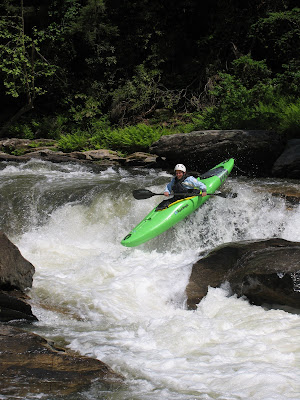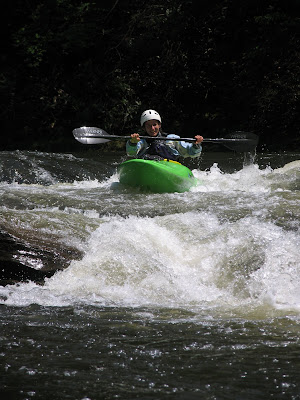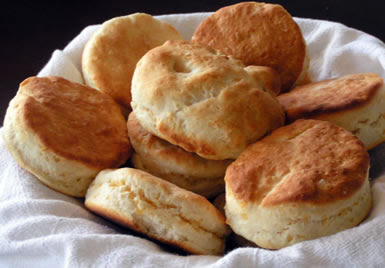Design for India

Image: Thumbnail images of the auditorium and the chairs designed by me for the Ravi J Matthai Auditorium at the Indian Institute of Management, Ahmedabad and these were taken in December 1999 during an event organized by Sam Pitroda, soon after the auditorium was commissioned.
The School of Interior Design,
CEPT University, Ahmedabad (SID) has announced its third conference in the “Interior Design Traditions in India” series to be held in the
Ravi J Matthai Auditorium (RJM) at the Indian Institute of Management, Ahmedabad (IIMA). This gives me an opportunity to reflect on the auditorium chair design for the RJM Auditorium since I was personally involved in the design of the tandem seating system that is used at this venue. I am quoting below the call for the conference and the participants will get to use my chairs during the conference and it gives me the opportunity to get feedback from our peers. Last year I was invited to speak at the SID conference that explored the Post-Independence Era in India and my presentation titled “Bamboo and Design: NID Initiatives” can be downloaded in three parts from these links here as pdf files:
SID2007_Bamboo_Design_01 (size 10.1 mb)SID2007_Bamboo_Design_02 (size 8.1 mb)SID2007_Bamboo_Design_03 (size 15.5 mb)Now back to the Ravi J Matthai Chair, sorry :-), the Auditorium Chair for the RJM Auditorium at the
IIMA, The story goes a long way back since in 1978 I had designed the NID Auditorium Chair to be used for the UNIDO-ICSID Conference on Design for Development. This was a real crash assignment and a crisis management effort due to the very limited time that we had to carry it out. The organisers of the conference at NID had somehow forgotten to design a chair although a new Auditorium was already under construction in late 1978 when I was brought into the picture with barely a month remaining. I was already involved in the conference efforts in another capacity in the background research and the case studies that were being assembled from the NID faculty and student experiences.
In the last week of November 1978 Prof Kumar Vyas and Prof. Dashrat Patel summoned me to the venue on the NID Second Floor and asked me if I would take up the assignment of designing a new chair for the NID Auditorium to be ready for the UNIDO-ICSID conference on the 14th January 1979! We had just 45 days to conceive, design, refine, build and deliver 200 plus chairs for the NID event. I used the NID Old Auditorium Chair as a model for my own offering and the base of the chairs are made in the same manner while the upper structure is new and uses canvas for the seat and the back. This project was being offered to me because I had completed another very time critical assignment in the late 80’s for the International Airport Authority of India (IAAI) when we had designed and then fabricated 400 tandem seating system chairs which is another long story. Here the metal tube based base structure was designed by me while the FRP chair shell used was that of Charles Eames and was being offered by a firm in Madras at a very good quality and price.
Gajanan Upadhaya, a faculty colleague and an ace furniture designer at NID who was designing the new staircase that would lead up to the auditorium wisely refused the assignment and it came down to me for my consideration and sleepless action. I took up the assignment under duress and on 14th January 1979 the conference opened in that auditorium and the rest is history. The chairs designed then are still in use at the NID. Dhimant Panchal who was then a student in Product Design assisted me on the task and J A Panchal was the Head of NID Workshops and he had the task of fabricating the chairs in time for the opening. The key contributor in the fabrication was the master craftsman Chaturbhai who was the then supervisor of the NID Metal Workshop and he played a major role in the jigs and fixtures that were developed to fabricate the chairs at NID as well as in the shop floor coordination and quality control in the fabrication processes. I will get back to the story of the NID Auditorium Chair in a later post but this project had laid the seeds for the IIMA assignment.

Image: The Ravi J Matthai auditorium at IIMA from the outside and the inside during an event in 1999.
In 1998 or thereabouts, Prof Pradeep Khandwalla, the then Director of the IIMA came to NID to meet Vikas Satwalekar the then Executive Director of NID and asked to see me since he was interested in getting a similar chair for the IIMA auditorium that was being designed by
architect Anant Raje keeping in mind the fine traditions of the
Louis I Kahn buildings on the IIMA campus. The NID had been appointed the architectural consultants to the IIMA way back in 1962 and it was NID who brought in the architect Louis I Kahn to provide the conceptual leadership for the project. I was fortunate to meet Khan personally on his last visit to Ahmedabad and listen to his lecture at NID in 1969. The IIMA buildings were icons that all of us looked up to and the opportunity of designing a chair for the extension auditorium on the campus was a real privilege for any designer.
I accepted the assignment and with a student assistant, Shambhavi Kaul from the Furniture Design faculty, worked on the refinements on the earlier NID chair to solve several problems of mounting canvas seats that would ease maintenance issues that we faced at NID. We developed a threaded tensioning detail that was the basis of the IIMA chair and a modified mounting detail that could connect the tandem seats to the concrete floors and steps at the Anant Raje designed auditorium. Master craftsman Chaturbhai who had by then retired from service at NID and started working with a metal furniture fabricator in Ahmedabad made the prototypes. However their company did not get the final contract since it was given to a lower bid from Anukool Furniture Pvt Ltd who completed the task under our supervision.
Now that I have started writing about the chairs and the processes that contributed to its making hundreds of facts and insights rush back to my mind and the text seems to keep growing too long. I will save the details for later and await feedback from the visitors to the RJM auditorium for the SID conference later this month. Details of the conference are quoted below. Unfortunately they do not have a website so the full quote is given below:
Seminar series on INTERIOR DESIGN TRADITIONS in INDIATheme and IntentInterior environments are a direct reflection of life and time. Today’s fast changing and globalising world has brought in extensive exposure to thoughts, ideas and objects of consumption. India holds a unique position of being in the dual worlds of tradition and modernity and the cultural mooring of its people demands very context specific responses that take care of both. To resist from being swept away by such extensive inputs and to find an appropriate direction to education and practice of interior design within the Indian context, it becomes necessary to understand how this change has occurred and is occurring.
Bringing together educators, scholars, subject specialists, practitioners and students, the seminar series allows to purview at one time many different perspectives and concerns related to the field of interior design, its evolution and possible future.
With the first two seminars focussing on the interior design traditions in India from pre-independence to pre-liberalisation period, the seminar series has already been successful in initiating the process of increasing the awareness in the country of interior design in India from a historic perspective leading up to the contemporary times. It has also helped create a platform to bring together the divergent experiences of the professional through presentations, documentation and exhibition and promote lively discussions.
The third and the last seminar in this series will focus on interior design in the period post liberalisation and in conjunction with the earlier two seminars, would position us suitably to identify the constants and variables in the development of interior design in India across time, ascertain the anchor that holds it all together and make visible that connecting thread which weaves through the exciting tradition of interior design in India.
INTERIOR DESIGN • POST LIBERALISATIONThe time from 1991 onwards has been undoubtedly one of the most important for India . The liberalisation of the Indian economy paved the way for India to participate in the globalisation process in-turn allowing globalisation to influence all aspects and spheres of life directly and indirectly. Interior Design too has been much influenced by this shift with the effects of on-going liberalisation constantly changing the way lives are lived and the spaces created for it.
The seminar will attempt to understand the impact that new thoughts, functions, products, technology and materials made and are still making in design thinking and the creation of interior spaces for people amidst shifting identities, cultures, values, design sensibilities, economic parities, social systems, geographies and demography.
Through this seminar, the issues we hope to discuss include
• Prime concerns, influences and inspirations in profession and how they have changed over the last 17 years
• Relevance and impact of interior spaces created in this period
• Interior design for the new functions that emerged and sectors that gained importance in the liberated economy including hospitality, retail, entertainment, IT and allied services
• Interdependence of discipline with allied industries from the manufacturing sector
• Role of crafts in interior design
• Adaptive re-use and interior design
• Sustainability and environmental issues within the scope of interior design
• Influence of new tools and techniques in visualisation, design and execution
• Interdisciplinary influences - attitudes and approaches
• Firm growth of the profession, establishment of formal education and rise of premier institutes
• Forecasting the major challenges and barriers of the near future
The seminar will provide a conducive environment and platform to share thoughts, discuss approaches, initiate rich interaction and exchange amongst all stakeholders that will help make sense of the many important
issues that play a determining role in interior design of the present day and the future we hope to create.
SPEAKERS AND PARTICIPANTSSpeakers of national and international repute have been invited to present their views on this theme. Apart from the faculties and students from the host institute, this seminar invites the heads, faculty and students of interior design and other related disciplines, interior designers and other professionals connected to the discipline and practice of interior design from all over India.
Aman Nath, Neemrana Group of Hotels, New Delhi
Amit Pasricha, Photographer, New Delhi
Bijoy Ramachandran, Hundredhands, Bangalore
Canna Patel, HCPIA, Ahmedabad
Dean D’Cruz, Mozaic, Goa
Jacob Mathew, Idiom Design and Consulting, Bangalore
Kishore Singh, Senior Editor, Business Standard (to be confirmed)
Lata and Jaigopal Rao, Inspire, Cochin
Latika Khosla, FreedomTree Design, Mumbai
Nitin Kilawala, Group7 Architects, Mumbai
Pronit Nath, Urban Studio, Mumbai
Ranjit Makkuni, Sacred World Foundation, San Francisco (to be confirmed)
Ratan J Batliboi, RJB-X, Mumbai
Ravi Sarangan, Edifice Architects,Mumbai
Sameep Padora, sP+a, Mumbai
Samira Rathod, Samira Rathod Design Associates, Mumbai
Shilpa and Pinkish Shah, S+PS Architects, Mumbai
Stephane Paumier, SPA Design, New Delhi
Uday A Athavankar, IDC, IIT Mumbai
Two sessions will also have the alumni of SID presenting their explorations in the world of design.
Seminar Convenors
Nimish Patel and Parul Zaveri, Abhikram, Ahmedabad
SEMINAR SCHEDULE:
The seminar will span 3 days with four sessions on each day starting at 10:00am and will go on till 6:00pm with tea and lunch breaks in between and dinner on Day01. Each session would last for 90mins with two speakers in each session and enough time for discussions.
REGISTRATION DETAILS:
Registration will take place at the venue on the first day from 9:00am onwards. As seats are limited, prior intimation/pre-registration by e-mail would be highly appreciated.
The registration charges are as follows:
Professional/Faculty: Rs.1000
Students: Rs.450
For more information, contact:
anand ramakrishnan . +91 97247 12537
kamalika bose . +91 99098 96482
seminar co-ordinators
SID Research Cell, CEPT University
Kasturbhai Lalbhai Campus, University Road
Navrangpura, Ahmedabad 380 009 INDIA
T : +91 (79) 2630 2470, 2630 2740 (Extn.181), 2630 6652
F : +91 (79) 2630 2075
E : research.sid (at) gmail.com
Design for India






























